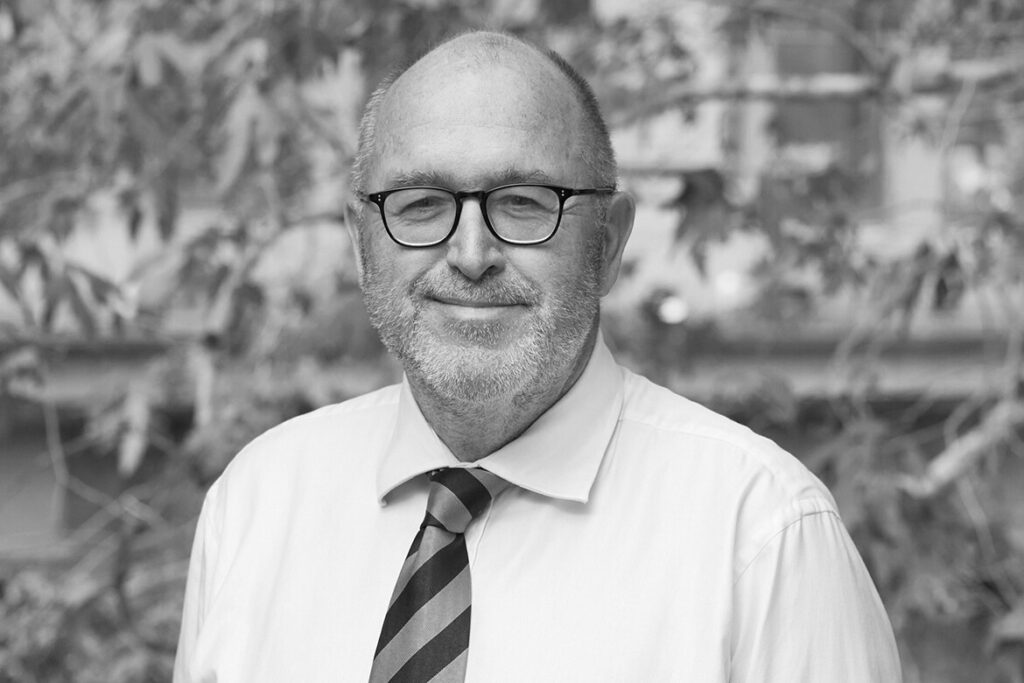INDESIGN Magazine’s 90th edition, The ‘City Futures’ Issue, is almost here! We speak with Tim Williams, cities practice lead at Grimshaw about the complex tensions our cities face in this post-pandemic, climate-critical era of globalised living.

August 2nd, 2023
The world isn’t going back to the shape it was in 2019. The pandemic, in all its enormity, has re-routed city development and city life. To start with, hybrid working has reduced the percentage of people now populating commercial buildings, and decentralised not only city populations but knowledge-led jobs, which can theoretically now be performed from anywhere.
Meanwhile, we see those city-centric districts which traditionally have housed commercial buildings evolving into residential and mixed use zones – a real-team re-evaluation of city real estate – not to mention future development.
Add to this, the inevitable fact that by 2050 all new buildings, infrastructure and renovations must achieve net zero embodied carbon, and existing buildings will need to employ adaptive reuse strategies to achieve net zero targets. The architecture, development and construction sectors have an incredible challenge on their collective hands.
I recently had a conversation with Dr Tim Williams, cities practice lead at Grimshaw. Williams’ career has seen him work as a government advisor to the UK Blair Government; act as a senior advisor on cities, residential planning and housing strategy; he helped bring the Olympics to East London; and is involved in Brisbane’s post-Olympics legacy planning. So, Williams knows cities, he can track big picture shifts and has a fairly good handle on future city developments, and he assures me: “It is no longer business as usual.”

Williams speaks of the ‘Amazon-isation’ of our cities, pointing out that Amazon trebled its land bank during COVID-19 – no surprise given the meteoric demand for online retail during that period. But what impact does a click on a shopping cart have on our cities? City-centric industrial land became the sought-after proposition for companies of an Amazon mind-set looking for warehouse and distribution facilities. “The Amazon-isation of our cities is a major trend going on, and that means reinventing industrial land warehousing. Meanwhile you’ve got shopping malls which are becoming empty cathedrals of a former religion,” he says.
And what does this all have to do with architecture? “All these big trend shifts speak to a real estate re-evaluation process that is of massive relevance to architects and people working in the built environment,” says Williams.
There is a discussion to be had around maximising our built environments, the social and environmental impacts of this and more pertinently, the skills required to execute our future cities. Williams agrees saying: “If I gambled, I would say that 40 per cent of CBD work in the next five years will be recycling existing assets rather than building new ones.” Effectively saving “stranded assets” – certainly offices – that don’t meet modern agendas.
“I think it’s useful to stand back and ask, ‘Has the market really shifted?’ The answer is yes, it has and the skills required have shifted… Which brings us to the final bit of the equation, which is the ESG agenda.” It’s a big moment in the history of architecture and the built environment, Williams contends.
As architects it’s our moment to get ahead of the curve, and offer up solutions in the face of uncertainty around infrastructure and city planning. “It’s about making projects again… being creative about what needs to be done, rather than being at the end of the food chain.”

In our upcoming 90th edition of INDESIGN Magazine, on sale 17 August, we dip our toes into this complex picture of modern cities and the future cities emerging. Through this issue we go deep on themes of City Planning, with live case studies for how we plan for change, and change our plans; City And Climate, and most importantly our relationship with Country as a pillar of climate-conscious architecture; and Precinct Life, where we consider how fashion, retail, hospitality, workplace and health destinations create thriving hubs for humans in this post-pandemic, climate-critical era of globalised living.
You can now pre-order your issue of INDESIGN90, The ‘City Futures’ Issue.
In the meantime, here are 10 articles about our cities and our future:
1. ‘Living in the City’ curated by Lacaton & Vassal at Tin Sheds Gallery
2. How we define ‘quality of life’ through architecture with PTW and DesignInc
3. HDR’s NEXTDC Data Centres mark a new chapter in urban integration
4. Our response to the Architects Declare Open Letter to design media
5. 3 ways our cities can adopt adaptive reuse with FK’s Nicky Drobis
6. AKIN, a First Nations-led design, will cover the 1.85 hectares of open space with a “regenerated natural retreat” in the heart Sydney
7. What inspired us about the Scandinavian housing model?
8. 3 essential changes: NSW AIA criticises the state’s Affordable Housing Strategy
9. Insight: How will AI and designers work together into the future?
10. “Instantly welcoming and culturally agnostic”: Darebin Intercultural Centre by Sibling Architecture
Image credits: Hero image – Coburg and Moreland Stations by Wood Marsh, photo by Peter Clarke; Image 3 – Davenport Living City by Lyons Architecture, photo by Peter Bennetts, all featured exclusively in INDESIGN90, The ‘City Futures’ Issue, out on 17 August.
INDESIGN is on instagram
Follow @indesignlive
A searchable and comprehensive guide for specifying leading products and their suppliers
Keep up to date with the latest and greatest from our industry BFF's!

London-based design duo Raw Edges have joined forces with Established & Sons and Tongue & Groove to introduce Wall to Wall – a hand-stained, “living collection” that transforms parquet flooring into a canvas of colour, pattern, and possibility.

For those who appreciate form as much as function, Gaggenau’s latest induction innovation delivers sculpted precision and effortless flexibility, disappearing seamlessly into the surface when not in use.

We republish an article in memory of the late architect by UTS, whose Dr Chau Chak Wing Building was Gehry’s first built project in Australia. The internationally revered architect passed away on 5th December.

A calm, gallery-like boutique by Brahman Perera for One Point Seven Four brings contemporary luxury and craft to Strand Arcade.
The internet never sleeps! Here's the stuff you might have missed

In Naturalizing Architecture, Takada moves beyond biomimicry to propose a regenerative vision for the urban environment.

Australia’s first planted light rail corridor sets new benchmark for transport-led urban transformation.

Merging two hotel identities in one landmark development, Hotel Indigo and Holiday Inn Little Collins capture the spirit of Melbourne through Buchan’s narrative-driven design – elevated by GROHE’s signature craftsmanship.